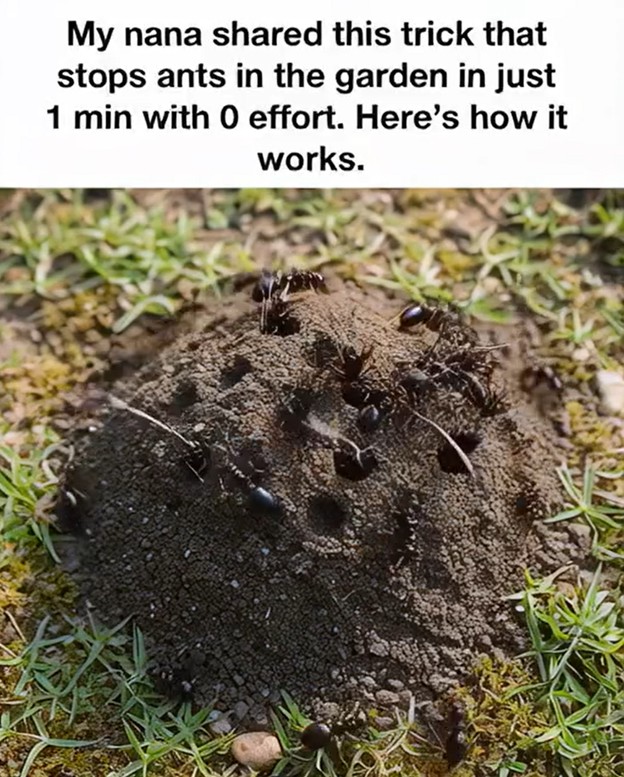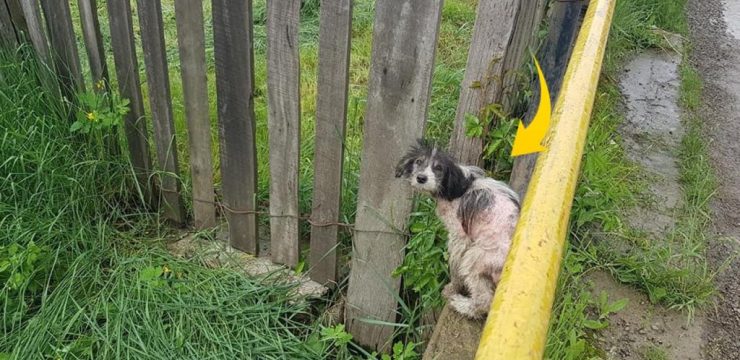Gardening brings joy, peace, and the satisfaction of growing something with your own hands. But as any gardener knows, it also comes with its fair share of frustrations. Among the most persistent are ants—tiny creatures that can turn a thriving garden into a battlefield. They disturb the soil, damage roots, and, perhaps most annoyingly, protect aphids, those little pests that suck the life out of plants. While chemical sprays may offer a quick fix, they often harm more than they help, damaging the environment, soil health, and even beneficial insects. Thankfully, my nana, a lifelong gardener with a gift for natural solutions, taught me a simple trick that sends ants packing without a single drop of pesticide. It’s fast, inexpensive, and completely natural.

I still remember the summer I discovered her secret. Her vegetable beds were bursting with life—tomatoes plump and red, zinnias standing tall, and not an ant in sight. I had tried everything in my own garden: traps, sprays, and even diatomaceous earth, but nothing worked for long. So I asked her what her secret was. She chuckled softly, led me to her spice rack, and pulled out a small jar of ground cinnamon.
That was it. Cinnamon.
She explained that by sprinkling ground cinnamon around the edges of her garden beds, she created an invisible barrier ants refused to cross. The strong scent interrupted their scent trails, confusing them and making the area seem hostile. Her rule was simple—use about a teaspoon of cinnamon per foot of soil line. The next morning, I tried it myself, circling my tomato patch with a fine dusting of cinnamon. By evening, the ants were gone.
Why does this simple trick work so well? The answer lies in understanding how ants operate. Ants may be tiny, but they’re incredibly organized. They use pheromones—chemical scent trails—to communicate, guide others to food, and coordinate movement. When cinnamon is applied, its intense aroma overwhelms those pheromone trails, essentially “jamming” their communication network. Without their invisible roadmap, the colony becomes disoriented and avoids the treated area altogether.
Beyond communication, cinnamon creates a physical barrier that ants dislike crossing. Its fine texture and volatile compounds make it uncomfortable for them to walk through. And unlike harsh chemical sprays, cinnamon is safe for humans, pets, and pollinators like bees and butterflies. It’s the kind of eco-friendly fix that works in harmony with nature rather than against it.
If you want to try this at home, the process couldn’t be easier. First, identify where ants are most active—around pots, garden beds, or at the base of plants. Then, sprinkle ground cinnamon in a thin, continuous line around those areas. One teaspoon per foot of soil is enough. Be thorough—ants will exploit even the smallest gap. After rain or every couple of weeks, refresh the cinnamon barrier to keep it effective. You’ll likely notice results within a day.
Chemical ant killers may seem effective, but they come with serious downsides. They can harm beneficial insects like bees, contaminate groundwater, and disrupt soil ecosystems by killing earthworms. Over time, some ant colonies even develop resistance to certain chemical formulas, making them harder to control. Cinnamon, on the other hand, is biodegradable, non-toxic, and perfectly safe to use around edible plants. You can grow your herbs, fruits, and vegetables without worrying about chemical residue.
Pet owners will also appreciate how gentle this method is. Cinnamon is generally safe for pets when used in small amounts outdoors. Just make sure your dog or cat doesn’t eat large quantities of it directly, as that can irritate their stomachs. For plants, avoid dusting the leaves directly; instead, focus on the soil or the garden perimeter.
The results speak for themselves. Gardeners across the country have shared their success stories using this trick. Sarah from Oregon said her vegetable patch stayed ant-free after just one application. Tom in California used it around his rose bushes and watched the ants disappear almost overnight. Online gardening groups and social media are filled with similar testimonials, proving that sometimes, the simplest ideas really do work best.
That said, there are a few common mistakes to avoid. Don’t leave breaks in your cinnamon line, or ants will find their way through. Be consistent with reapplication, especially after rain or watering. And remember that cinnamon works best when combined with good garden maintenance—keep the area free of food scraps, control aphids early, and avoid standing water where ants can nest.
Cinnamon isn’t the only natural trick gardeners can rely on. Nature provides plenty of eco-friendly solutions if you know where to look. Coffee grounds, for example, repel slugs and snails while enriching the soil with nitrogen. Banana peels make excellent rose fertilizer thanks to their potassium content. Crushed eggshells help deter snails and provide calcium to plants. With just a bit of creativity, you can keep your garden thriving while staying in harmony with the environment.
What I love most about my nana’s cinnamon trick isn’t just how effective it is—it’s the philosophy behind it. She always believed that gardening should nurture life, not fight against it. Her approach was about balance: letting nature do its part while offering gentle guidance. By using cinnamon instead of chemicals, we’re not only protecting our plants but also the ecosystems that depend on them.
The next time you spot ants marching across your garden path or clustering around your plants, don’t rush for a pesticide bottle. Head to your kitchen instead. Grab that jar of cinnamon and create your natural barrier. It takes less than a minute, costs almost nothing, and keeps your garden safe, vibrant, and alive.
Sometimes, the best solutions aren’t found in stores—they’re sitting quietly in your pantry, waiting to be rediscovered. So take a cue from my nana: sprinkle a little cinnamon, breathe in the earthy scent, and enjoy watching your garden flourish—ant-free and chemical-free, just as nature intended.





